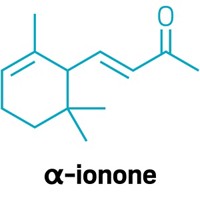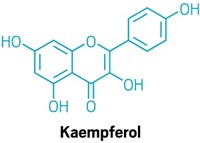Advertisement
Grab your lab coat. Let's get started
Welcome!
Welcome!
Create an account below to get 6 C&EN articles per month, receive newsletters and more - all free.
It seems this is your first time logging in online. Please enter the following information to continue.
As an ACS member you automatically get access to this site. All we need is few more details to create your reading experience.
Not you? Sign in with a different account.
Not you? Sign in with a different account.
ERROR 1
ERROR 1
ERROR 2
ERROR 2
ERROR 2
ERROR 2
ERROR 2
Password and Confirm password must match.
If you have an ACS member number, please enter it here so we can link this account to your membership. (optional)
ERROR 2
ACS values your privacy. By submitting your information, you are gaining access to C&EN and subscribing to our weekly newsletter. We use the information you provide to make your reading experience better, and we will never sell your data to third party members.
Business
Taste Of Wacker
Firm's niche food ingredients business forms kernel of new growth strategy
by Melody Voith
April 12, 2010
| A version of this story appeared in
Volume 88, Issue 15

Food ingredients can come from some strange places. The red color carmine, for example, is derived from the insect Dactylopus coccus, which lives and feeds on prickly pear cacti. Cysteine, an amino acid, is often used as a dough conditioner to make breads fluffier and to add a meat flavor to various prepared foods. But it would likely surprise some consumers to learn that common sources of cysteine are human hair, feathers, and pig bristles.
Dietary rules and government regulations mean food makers have to continually assess how they color and flavor food (C&EN, March 29, page 25). Carmine is not considered kosher, and cysteine derived from human hair has been outlawed in the European Union. To get soft bread and meaty flavors, manufacturers have the option to source vegetarian-grade cysteine from Germany’s Wacker Chemie.
Although Wacker is better known for its inorganic businesses—the firm is a leading supplier of polysilicon for the computer chip and solar industries—it also makes polymers and fine chemicals for the food, pharmaceutical, and personal care industries. In January, the company reorganized its fine chemicals business and relaunched it as Wacker Biosolutions.
At an earnings press conference at the firm’s Munich headquarters last month, Wacker Chief Executive Officer Rudolf Staudigl told reporters that the new division “focuses its products on the food industry and life sciences segment. We already have a leading position, and we want to expand our strong position.” He added that he expects 2010 sales “to grow at a double-digit rate.”
The animal and human sources of conventional cysteine are not the only drawbacks of the traditional extraction method. The process requires hydrolysis with huge amounts of hydrochloric acid; 27 kg of hydrochloric acid is required to yield 1 kg of cysteine. The mixture then undergoes fractional crystallization and electrolysis.
Wacker’s cysteine production method involves fermenting plant-based raw materials with Escherichia coli. The company claims its process is much more efficient and environmentally friendly. The yield from the bacterial transformation captures 90% of the cysteine—versus 60% by conventional methods—and it requires only 1 kg of hydrochloric acid per kilogram of cysteine. And the fermentation residues can be used as fertilizer.
In addition to cysteine, Wacker also claims market leadership in cyclodextrins, which are used as encapsulants in foods and beverages for guest molecules such as vitamins and coenzymes or other active agents. Cyclodextrins are made up of glucose units linked together to form a ring. Depending on the active ingredient, food makers can choose from three different pore sizes in Wacker’s catalog. The water-soluble packages disperse hydrophobic active ingredients, mask undesirable flavors and odors, and enhance bioavailability.
The encapsulants are also used as stabilizers and carriers in household and personal care products, pharmaceuticals, textiles, and agrochemicals. They protect additives from degradation by ultraviolet light, temperature, or oxidation.
To make cyclodextrins, Wacker starts with plant-based raw materials such as corn or potatoes and breaks down the starches with the help of cyclodextrin-glycosyl transferase enzymes. The enzymes snip out sections of the carbohydrate’s helical structure and combine them to form a ring-shaped oligosaccharide. Different versions of the enzymes are used to make the three sizes of cyclodextrins.
Wacker’s food ingredients collection also includes a business that moved over from its polymer division in 2009: polyvinyl acetate solid resins. The resins are used as a base for chewing gum.
During a workshop that followed Wacker’s press conference last month, the firm’s director of chewing gum, Christoph Winterhalter, highlighted the growth rate in the company’s food businesses. For example, from 2002 to 2008, the compound annual growth rate was 23% for cyclodextrins and 48% for cysteine.
Still, in 2009, the former fine chemicals division made up a bit less than 3% of the company’s $5 billion in revenues. It is by far the smallest business at Wacker, but the firm has big hopes for growth. Its goals for the division are to intensify its expertise in the food and life sciences market; strengthen its market position for cysteine, cyclodextrins, and chewing-gum base; and develop and commercialize new and existing biotech processes.
John C. Leffingwell, president of food and flavor consultancy Leffingwell & Associates, agrees that there is strong growth potential in Wacker’s targeted food markets and says flavors built on chemical reactions with cysteine are “potentially a really good business.” Wacker’s corner of the ingredients market is large but very fragmented, he adds. It is attractive because of the relatively high margins compared with what firms get for more traditional chemical products. Leffingwell points out that if Wacker is interested in making food products by fermentation, “they probably have some other interesting things up their sleeves.”
Indeed, Winterhalter says, the company is researching new products for the food markets and is looking for renewable sources in addition to corn and potatoes. Although Wacker plans to avoid using genetically modified organisms in its processes, he says, “we are investigating other ways to use fermentation and biotransformation technology optimized for food applications.”







Join the conversation
Contact the reporter
Submit a Letter to the Editor for publication
Engage with us on Twitter